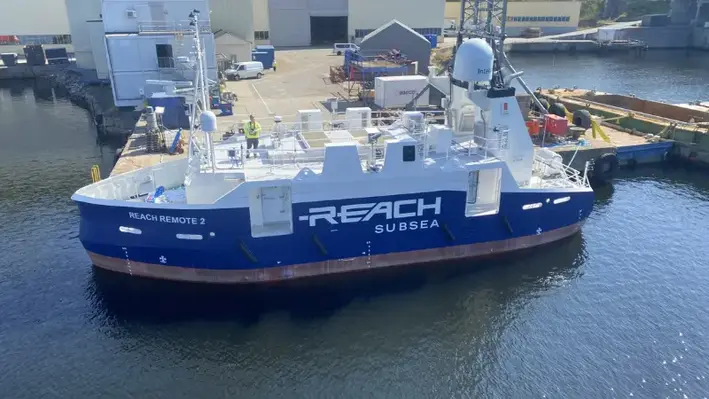
 Reach Subsea’s pioneering Uncrewed Surface Vehicle (USV) in on-route to Australia to deliver subsea services for Woodside Energy.
Reach Subsea’s pioneering Uncrewed Surface Vehicle (USV) in on-route to Australia to deliver subsea services for Woodside Energy.
Reach Remote 2 will perform reservoir monitoring on the Scarborough gas field by utilising the company’s gWatch technology. gWatch, used widely across Norwegian gas fields, measures time-lapse gravity and seafloor deformation to detect small changes in mass and pressure. The precision measurements significantly reduce uncertainty in gas reservoirs and aquifer influx to enhance workflows and support accurate production forecasts.
Reach Remote 2’s operation in Australia will demonstrate the USV’s ability to reduce offshore personnel operational risks, cut costs and reduce environmental impact compared to traditional crewed vessels.
Reach Subsea’s CEO Jostein Alendal said, “Seeing the Reach Remote 2 vessel sail ‘down under’ to deliver world-class services to a company like Woodside Energy is a proud moment for all of us at Reach Subsea. This project clearly demonstrates that the transition to a robotic future is not a vision – it is happening now. We are reducing HSE risks by removing personnel from hazardous environments, reducing operational costs and cutting the carbon footprint of offshore activities by up to 90%.
“It is a major leap forward for the industry and a testament to what innovative technology can achieve.”
The deployment marks the beginning of Reach Subsea’s Inspection, Maintenance and Repair (IMR) operations in Australia, and highlights the company’s expanding global presence.
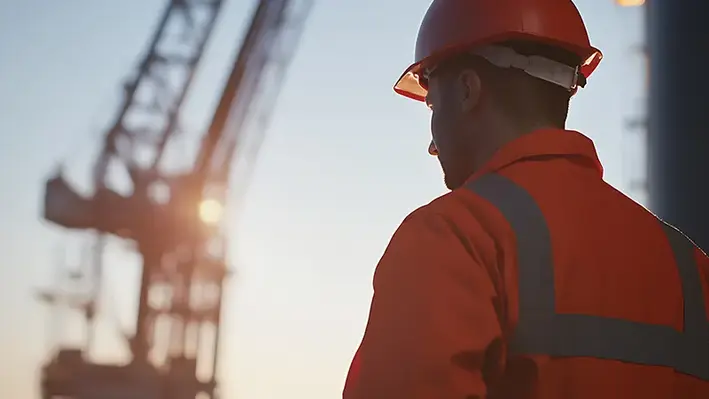
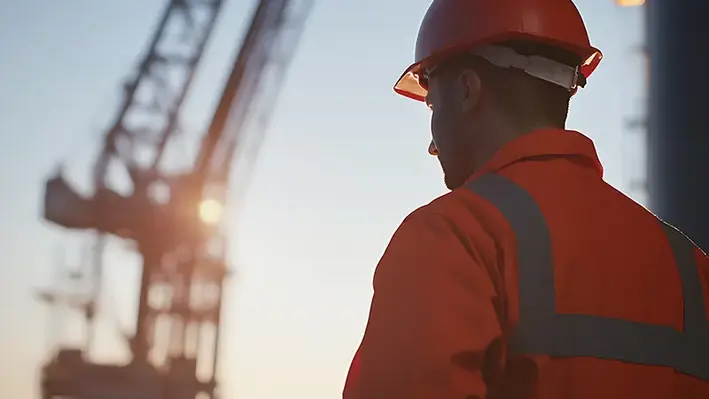 Recent events in Australia’s decommissioning space demonstrate the complexity of offshore decommissioning campaigns from the environmental and work, health and safety perspectives.
Recent events in Australia’s decommissioning space demonstrate the complexity of offshore decommissioning campaigns from the environmental and work, health and safety perspectives.
Lessons learned from these experiences will assist the industry to prepare itself to meet the large influx of decommissioning work ahead, according to a new insight paper from law experts at Pinsent Masons, co-authored by Cormac Mercer and Laura Slocombe, which continues below:
Last week, the Wilderness Society commenced proceedings against the National Offshore Petroleum Safety and Environmental Management Authority (NOPSEMA) in the Federal Court seeking judicial review over its approval of an environmental plan (EP) from Santos WA Northwest Pty Ltd (Santos) for its Reindeer wellhead platform to be “left in a preserved state for future phases”. This is despite Santos’ Reindeer field having ceased production this year.
Offshore activities, including decommissioning, must be approved by NOPSEMA. The approval process involves lodging certain documents, including an EP, along with an operation management plan and a safety case. The EP is generally the most significant, and potentially problematic, of these.
The Wilderness Society has publicly claimed that, by approving Santos’ EP, NOPSEMA did not enforce Santos’ duty under the Offshore Petroleum and Greenhouse Gas Storage Act 2006 (Cth) (OPGGS Act) as titleholder of the Reindeer facilities to maintain financial assurance, in particular in relation to decommissioning the infrastructure and remediating damage to the surrounding environment.
Section 571(2) of the OPGGS Act requires a titleholder to maintain financial assurance sufficient to give the titleholder the capacity to meet costs, expenses and liabilities arising in connection with, or as a result of:
the carrying out of the petroleum activity;
the doing of any other thing for the purposes of the petroleum activity; or
complying, or failing to comply, with a requirement under the OPGGS Act in relation to the petroleum activity.
The duty imposed by section 571(2) of the OPGGS Act extends to covering any costs, expenses or liabilities arising in connection with, or because of, compliance with a titleholder’s duty under section 572C of the OPGGS Act, which relates to the escape of petroleum.
If NOPSEMA’s decision to approve Santos’ EP is ultimately quashed by the Federal Court, it could result in NOPSEMA assessing EPs in the future on the basis of demonstrated financial capacity to undertake decommissioning. The Wilderness Society matter is now before the Federal Court.
This litigation contributes to the recent rise in legal challenges to NOPSEMA’s EP approvals. Whether this leads to a more conservative approach to decommissioning activities by titleholders and NOPSEMA, potentially disincentivising developers from exploring innovative decommissioning solutions with positive environmental outcomes, remains to be seen.
Environmental approvals for major offshore decommissioning projects will continue to be under increased scrutiny, adding to the complexity of offshore decommissioning campaigns. Businesses operating in the offshore space should ensure that EPs and assessments, including consultation, are undertaken in a comprehensive manner with a close eye on recent legal and scientific developments.
Work, health and safety
In general, offshore decommissioning is an inherently hazardous process that exposes workers to a variety of physical and psychosocial risks.
Infrastructure requiring decommissioning is often located in harsh and unpredictable marine environments which are geographically isolated. Remote work has become a well-known psychosocial hazard in many industries but is particularly acute in the renewable energy industry, due to minimal access to resources and support, often for prolonged periods of time.
In addition, other obvious physical hazards include the handling of hazardous chemicals and contaminants; manual handling challenges in bringing infrastructure to shore; fires and explosions; and interactions with people and mobile plant, including sea vessels.
NOPSEMA is paying close attention to offshore decommissioning works in Australian waters and is cracking down on operators who are failing to mitigate risks.
Recently, NOPSEMA issued three general directions to Woodside for its Stybarrow and Griffin fields off the Western Australian coast and Minerva field offshore of Victoria.
Each direction requires Woodside to undertake and document a risk assessment to identify and evaluate all risks to health, safety and the environment associated with Woodside’s removal activities. This includes a requirement that “control measures” are in place to reduce risks to as low as reasonably practicable. NOPSEMA’s intervention comes off the back of an oil spill incident at Woodside’s Griffin field. In addition to potential environmental damage, there were concerns that workers were exposed to hydrogen sulphide, an extremely toxic gas, due to the spill.NOPSEMA has powers to enforce WHS compliance on offshore projects that reflect the powers of state, territory and Commonwealth regulators under the model harmonised work health and safety laws. For example, inspectors can:
enter offshore facilities to conduct inspections and interviews;
issue provisional improvement notices, prohibition notices and infringement notices; and
take possession of plant and samples.
NOPSEMA can also commence criminal and civil prosecutions, seek injunctions - stopping someone doing a certain action or activity - and apply for adverse publicity orders against corporate entities, with reputational impacts.
Operators of decommissioning projects in Australian offshore environments are reminded that they must take all reasonably practicable steps to protect the health and safety of workers at the facility and of any other persons who may be affected by their activities. This is a legislative obligation prescribed by the OPGGS Act, largely mirroring the primary duty under the harmonised work health and safety framework that requires a person conducting a business or undertaking to ensure, so far as is reasonably practicable, the health and safety of workers and others.
If risks cannot be fully eliminated, which is usually the case in high-risk workplaces such as offshore decommissioning facilities, operators should not wave the white flag and sit still. They have a duty to ensure that all risks are minimised, so far as is reasonably practicable, particularly those which are known, obvious and foreseeable.
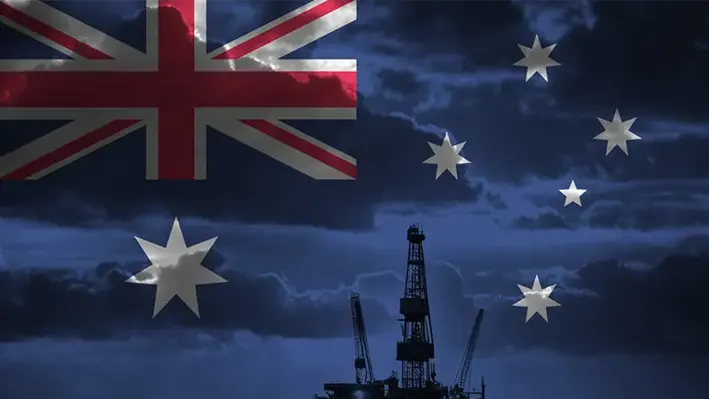
 Following the release of a new study exploring the infrastructure and capabilities required to support offshore oil and gas decommissioning in the Northern Territory, a timetable of potential projects and opportunities is coming into focus.
Following the release of a new study exploring the infrastructure and capabilities required to support offshore oil and gas decommissioning in the Northern Territory, a timetable of potential projects and opportunities is coming into focus.
It begins with subsea infrastructure and mooring systems associated with the Northern Endeavour project, coming ashore from 2025, and continues through the decades culminating with potential involvement on Ichthys, coming ashore from 2058 onwards.
However, the intermittent nature of the work means the establishment of a permanent, local decommissioning and abandonment (D&A) workforce is unlikely to be economic, compared with resources and labour at rival locations, notably Western Australia (WA).
Australia's Centre of Decommissioning (CODA) released its Northern Territory report in July highlighting some of the limitations of the region, as well as areas in which it can play a meaningful role in the nation’s decommissioning efforts.
“It is not deemed credible for large fixed facilities (i.e., non-wellhead platforms) or floating facilities to be decommissioned in the Northern Territory,” the report notes.
However, the state does appear to hold a great deal of promise in aiding work to process related subsea infrastructure and mooring systems.
From a planning perspective, CODA states, the following are the most credible oil and gas decommissioning opportunities in the Northern Territory:
2025: Subsea infrastructure and mooring systems associated with the Northern Endeavour, coming ashore from 2025.
2032-2036: Subsea infrastructure, mooring systems and a wellhead platform associated with Montara, coming ashore between 2032 and 2036.
2038: Subsea infrastructure, mooring systems (CALM buoy) and a wellhead platform associated with Blacktip, coming ashore from 2038.
2047-2052: Subsea infrastructure and mooring systems associated with the Prelude and Crux developments, coming ashore between 2047 and 2052.
2050-2055: Subsea infrastructure, mooring systems and a wellhead platform associated with the Barossa and possibly the Bayu Undan developments, coming ashore between 2050 and 2055.
2058-2063: Subsea infrastructure and mooring systems associated with Ichthys, coming ashore from 2058 and 2063.
Crucially, the report suggests that based on the estimated decommissioning dates, there does not appear to be significant overlaps in the decommissioning windows of the various developments.
Lack of overlap means that each decommissioning campaign will need to be established separately – including leases on land, and mobilisation of a workforce and equipment.
“Between the defence and offshore oil and gas industries, there is unlikely to be the demand to sustain a continuous decommissioning workforce especially compared with other jurisdictions such as WA,” it notes.
“Given decommissioning requires specialist capability, this will result in a short-term or ‘project’ based workforce,” it adds.
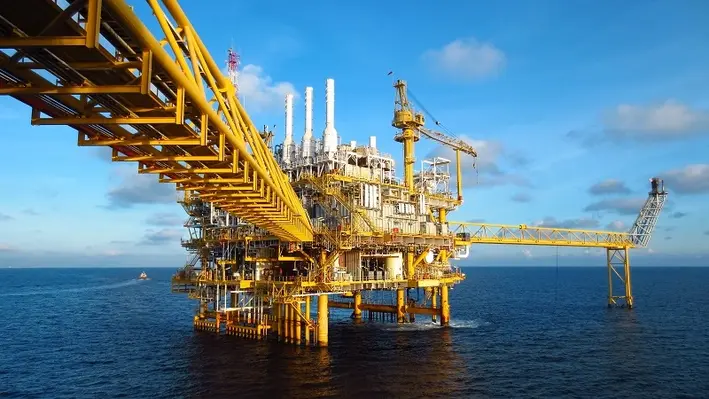
 A new report by an alliance of unions and leading environmental organisations has recommended the establishment of a nation-first decommissioning hub in Western Australia to manage the state's growing number of retired offshore oil and gas assets.
A new report by an alliance of unions and leading environmental organisations has recommended the establishment of a nation-first decommissioning hub in Western Australia to manage the state's growing number of retired offshore oil and gas assets.
The WA Can’t Wait report, a collaboration between Greenpeace Australia Pacific, Unions WA, Conservation Council WA, Maritime Union of Australia - WA Branch, The Wilderness Society, Australian Manufacturing Workers Union - WA Branch, Electrical Trades Union - WA Branch, argues that a WA decommissioning hub would deliver thousands of secure, skilled jobs, protect marine ecosystems and coastal communities, and bring scrap steel and other materials into local domestic circular supply chains.
Recommendations include:
• A decommissioning hub be built in Western Australia, near current fossil fuel infrastructure and where green recycling facilities can be established
• Oil and gas operators are held financially responsible and a fully industry-funded clean-up be mandated
• Existing laws are strengthened and enforced to ensure a full and timely decommissioning
• The safety of workers and the environment is prioritised
• Investment in ports, recycling facilities and local workforces is increased to support decommissioning and emerging offshore wind and other renewable energy industries.
Geoff Bice, Greenpeace Australia Pacific WA Campaign Lead, pointed out that 89% of Australia’s 5.7 million tonnes of offshore oil and gas infrastructure is in West Australian waters.
“A decommissioning hub is WA-positive, and the industry should foot the bill for their own mess. This isn’t just a clean-up plan, it’s a once-in-a-lifetime opportunity to build a world-leading industry.”
Matt Roberts, Conservation Council of Western Australia Executive Director, said,“50% of Australia’s offshore oil and gas infrastructure is due to be decommissioned by 2030 and most of it is in WA. It is critical that companies are held to account to deliver on their environmental responsibilities. There are also huge opportunities for new jobs in decommissioning and metals recycling. These are the jobs of the future that will help us transition to renewable energy."
Will Tracey, Maritime Union of Australia WA Secretary, said, “We welcome this practical, worker and community-focused contribution to solving a national decommissioning bottleneck. This is how we keep high value jobs in WA and secure economic strength for decades to come, building a bridge between the energy past and a just, sustainable future. It’s time for the government to act on what workers and communities are calling for: full removal, local recycling, and a Future Made in Australia that starts in WA.”

 Integrated energy services giant, Kent, has been awarded a technical advisory services contract by the Australian Government to support the permanent plugging and abandonment of the Laminaria-Corallina fields in the Timor Sea.
Integrated energy services giant, Kent, has been awarded a technical advisory services contract by the Australian Government to support the permanent plugging and abandonment of the Laminaria-Corallina fields in the Timor Sea.
The contract also includes advisory services for the removal of associated subsea infrastructure within the fields.
The award underscores Kent’s position as a trusted decommissioning partner following its existing work conducted on the Northern Endeavour FPSO facility, as well as its expanding footprint within the APAC region. Under the initial two-year contract, Kent will deploy a team of technical and regulatory experts to provide strategic and operational support throughout the decommissioning phase.
Michael Costello, Executive Vice President – Development, APAC & Americas, said, “This contract is a testament to the trust the Australian Government has placed in Kent’s decommissioning expertise. We are proud to continue supporting the safe and responsible transition of offshore assets, prioritising environmental outcomes and technical integrity at every stage.”
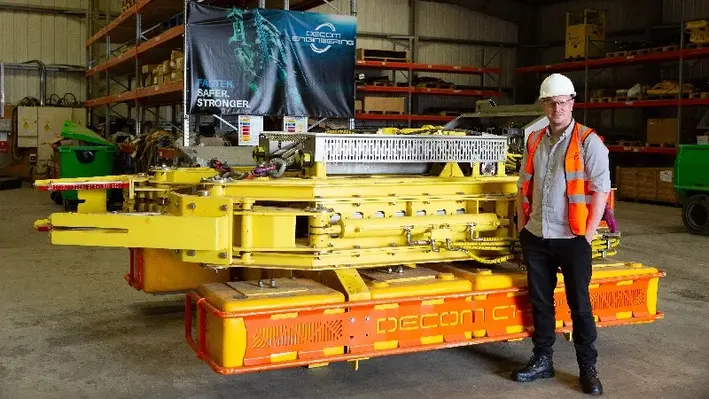
 Decom Engineering has appointed Nick McNally as managing director, to drive ahead the company's strategy on accelerating international expansion, scaling operations and strengthening its position as a leading provider of patented cutting technologies to the global energy industry
Decom Engineering has appointed Nick McNally as managing director, to drive ahead the company's strategy on accelerating international expansion, scaling operations and strengthening its position as a leading provider of patented cutting technologies to the global energy industry
McNally was formerly the company’s commercial director, under whose leadership Decom has rolled out a new ultra-light Chopsaw with improved cutting performance, which has been deployed across complex subsea projects in challenging offshore environments, and the company has experienced recent project wins in Australia, South America and Europe.
The company has also consolidated operations in Aberdeen, closed its Northern Ireland facility, and restructured its internal systems and roles. The company is actively progressing ISO certification as well as additional IP coverage and is engaged with the Fit for Offshore Renewables programme, enabling greater access to clean energy markets and expanding opportunities in offshore wind.
Decom plans to expand its workforce from 16 to over 25 staff within the next 18 months, with new roles across engineering, operations, and business development.
McNally said, “This is an exciting new stage for Decom as the business evolves from a highly respected niche engineering firm into a globally recognised technology partner.
“With new markets opening up and recent contract wins in Australia, Brazil and the Gulf of Mexico, the opportunities ahead are considerable and my focus will be on building the infrastructure, capability and culture to meet that growth head-on.”
“With international demand growing and increasing interest in our cutting technology, we’re focused on scaling responsibly, strengthening our systems, investing in our people and remaining agile, which enables us to move into new markets such as offshore wind and onshore decommissioning.”
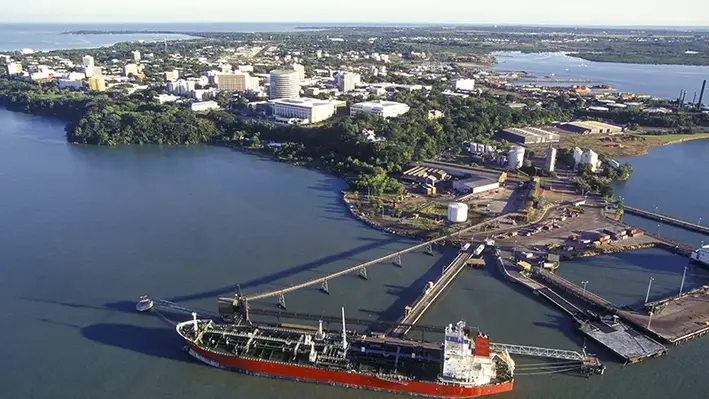
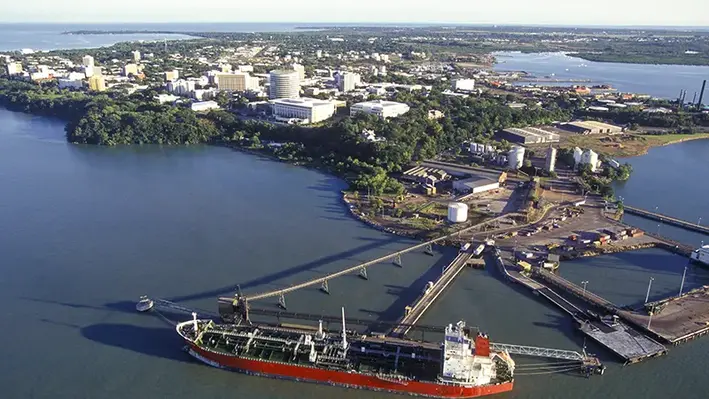 Australia's Centre of Decommissioning (CODA) has released a new study exploring the infrastructure, capabilities and regulatory systems required to support offshore oil and gas decommissioning in the Northern Territory.
Australia's Centre of Decommissioning (CODA) has released a new study exploring the infrastructure, capabilities and regulatory systems required to support offshore oil and gas decommissioning in the Northern Territory.
Its new Northern Territory Decommissioning Location Study evaluates ports and surrounding industries that could facilitate the dismantling, recycling and disposal of equipment recovered from the Browse and Bonaparte basins over the next 40 years.
The study confirms there are “credible opportunities” for the Northern Territory, that are most relevant to subsea infrastructure and mooring systems associated with assets such as Northern Endeavour, Montara, Blacktip, Barossa and Ichthys.
CODA’s CEO Francis Norman said the report highlights the importance of coordinated planning and investment across jurisdictions.
“The Northern Territory has a real opportunity to play a role in Australia’s offshore decommissioning future,” said Norman.
“By identifying practical pathways to build local capability and work in alignment with national infrastructure, this study supports a more collaborative and connected approach to end-of-life asset management.”
Specifically, Darwin Harbour offers multiple viable receival points, including the East Arm Wharf, Marine Supply Base, Darwin Ship Lift and the proposed Middle Arm Module Offloading Facility, the report notes.
The study also highlights that intermittent demand and limited local waste treatment capacity present challenges to establishing a dedicated and continuous decommissioning industry in the Northern Territory.
The findings also reinforce the importance of clear regulatory processes and long-term infrastructure planning.
This includes opportunities to integrate with national waste treatment networks and future facilities such as the Chandler geological repository and Whyalla’s Electric Arc Furnaces.
The study was commissioned by CODA and developed by Kent, drawing on its global decommissioning expertise to assess infrastructure needs and opportunities in the Northern Territory.
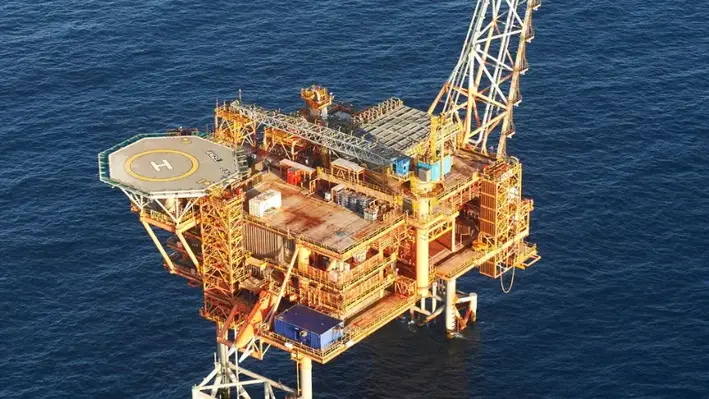
 Woodside Energy has assumed operation of assets in the Bass Strait following a historic agreement with ExxonMobil Australia, unlocking potential development of additional gas resources.
Woodside Energy has assumed operation of assets in the Bass Strait following a historic agreement with ExxonMobil Australia, unlocking potential development of additional gas resources.
From completion, Woodside will assume operation of the offshore Bass Strait production assets, the Longford Gas Plant, the Long Island Point gas liquids processing facility and associated pipelines.
As operator, Woodside will take on the responsibility for asset planning and execution activities, pursuing a value maximisation strategy that targets further production and reliability improvements. This move combines Woodside’s existing global operations with ExxonMobil’s experience workforce in the Bass Strait who will transfer to the operator.
The agreement also created flexibility to realise future development opportunities that meet Woodside’s capital allocation framework. The operator has identified four potential development wells that could deliver up to 200 petajoules of sales gas to the market. Under the agreement, Woodside can solely develop these opportunities through the Bass Strait infrastructure subject to the further technical maturation and a final investment decision.
Woodside EVP and COO Australia, Liz Westcott, said, “As a proudly Australian company, Woodside support essential domestic energy needs in both Western Australia through the North West Shelf, Pluto and Macedon operations, and on the east coast through its equity participation in Bass Strait.
“Taking operatorship of Bass Strait demonstrates Woodside’s continued commitment to meeting Australia’s domestic energy demand while maximising the value of existing infrastructure.”
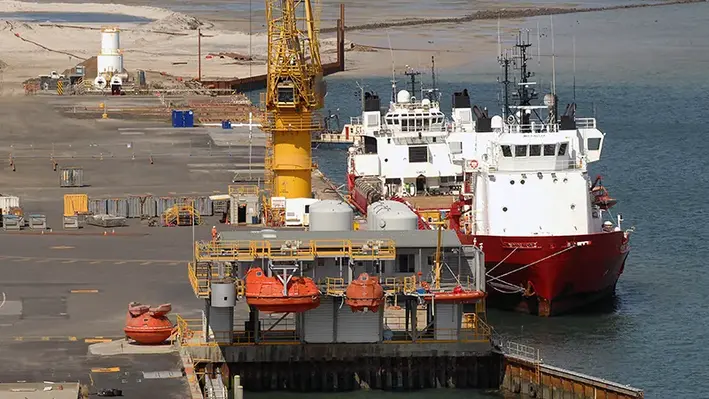
 Esso Australia has spent more than US$2.5bn in early decommissioning works in the Bass Strait so far as it dismantles infrastructure in the area — with the Barry Beach Marine terminal as integral to future work as it was in the establishment of the region’s offshore industry decades earlier.
Esso Australia has spent more than US$2.5bn in early decommissioning works in the Bass Strait so far as it dismantles infrastructure in the area — with the Barry Beach Marine terminal as integral to future work as it was in the establishment of the region’s offshore industry decades earlier.
The spend so far includes the permanent plug and abandonment of more than 200 wells, according to Richard Perry, a project manager for the company.
“This work will continue through to 2027, when we will then be ready to decommission by removing the platforms and transporting them to shore for dismantling and recycling,” he wrote in a recent update.
The group’s work in the Bass Strait represents perhaps Australia’s biggest decommissioning project.
The Strait is home to 19 offshore platforms that have produced oil and gas that has played a vital role in powering Australian homes and businesses and supported the nation’s energy security since the late 1960s.
Today, it supplies much-needed gas to south-east Australia from only six of these facilities.
“While ongoing investments will see us maintain our reliable supply of gas from Bass Strait into the 2030s, we are also decommissioning the 13 offshore facilities that are no longer producing oil and gas,” noted Perry.
However, decommissioning an offshore platform is a complex, multi-stage process, he added in a community outreach note.
“It begins with well plug and abandonment, which permanently seals the wells underneath the platform that have provided access to the oil and gas resources below the seafloor. Some of our platforms have up to 37 wells, while others have only a few. We then carry out essential maintenance including cleaning and disconnecting all pipelines from the platform.”
The Pioneering Spirit, the world’s largest construction vessel, will cut, lift and transfer the topsides and jackets from offshore platforms, onto barges for transport to the Barry Beach Marine Terminal, where they will be offloaded for dismantling and recycling.
For nearly 60 years, the terminal has played a central role in supporting Esso Australia’s Bass Strait operations, and will continue to do so as the emphasis shifts to decommissioning.
“The terminal has played a critical role in our safe completion of over US$2.5bn in early decommissioning works, including the permanent plug and abandonment of more than 200 offshore wells,” said Perry.
That incudes the safe recycling and disposal over 10,000 tonnes of steel and concrete at the terminal — around as much as the Eiffel tower weighs.
“As we move into the next phase of decommissioning, the terminal will continue to serve as our primary marine base, supporting both ongoing gas production and the safe, environmentally responsible and efficient removal of offshore infrastructure.”
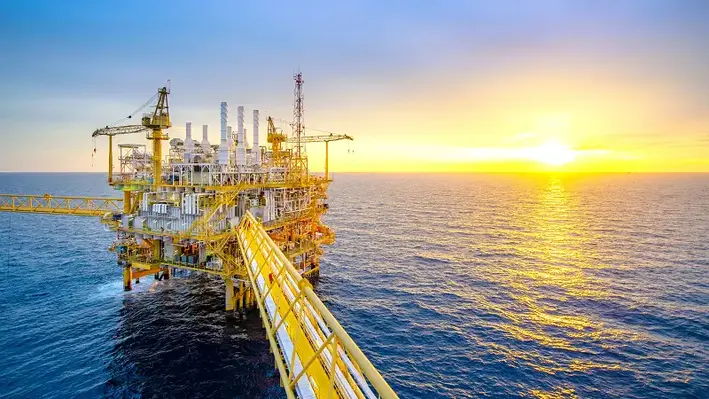
 Decommissioning activities can be complex and challenging, and unexpected costs can often arise.
Decommissioning activities can be complex and challenging, and unexpected costs can often arise.
This is illustrated by some of the challenges faced by Woodside, which is currently executing multiple complex decommissioning activities offshore Australia. In its Q2 2025 report it outlines progress in the quarter.
“We successfully completed the plugging of the Minerva and Stybarrow wells. Removal of other equipment at the legacy Minerva, Stybarrow and Griffin assets has been impacted by unexpected challenges, with further engineering and alternative solutions required. Whilst this has had some cost impacts, we are applying learnings to improve planning and execution,” said Woodside CEO Meg O’Neill.
The company successfully completed the plug and abandonment of the three remaining wells at the Minerva field, offshore Victoria, as well as concluding the 10-well Stybarrow plugging campaign. It recovered around 45% of the Minerva pipeline across State and Commonwealth waters. However, activities had to be suspended due to challenges to pipeline recovery and adverse weather conditions, with recommencement depending on vessel availability.
Woodside continued decommissioning activities in the Bass Strait, including the submission of environmental approvals and plugging of 22 wells.
The company is currently evaluating decommissioning work plans for Minerva, Stybarrow and Griffin.
“The as-left condition on some closed sites has continued to present challenges for safe and efficient execution of decommissioning,” the company said, adding that these challenges have pushed up spend and cost estimates.
O’Neill said the company continued to demonstrate operational excellence and world-class project execution over the second quarter, with a focus on driving future growth and value.
On its website, Woodside underlines its commitment to executing decommissioning activities with a focus on safety and the environment, coupled with efficiency. “Decommissioning is integrated into project planning and operations, from the early stages of development through to the end of field life. This includes conducting assessments to inform our planning and decision making, which is underpinned by science and marine research. In the developing regulatory environment, we continue to listen, learn and respond to our stakeholders, while expanding our global decommissioning experience,” the company says.
Woodside’s decommissioning approach recognises the importance of reusing and recycling material from its decommissioning activities where possible. Its waste mitigation hierarchy prioritises reduction, reuse, recycling, and treatment over disposal.

 Two separate environmental incidents linked to ageing offshore assets off Western Australia (WA) could trigger further scrutiny into the industry’s decommissioning actions.
Two separate environmental incidents linked to ageing offshore assets off Western Australia (WA) could trigger further scrutiny into the industry’s decommissioning actions.
It follows revelations by independent news outlet, Boiling Cold, that Chevron had detected gas leaking at a recently-closed site on Barrow Island, which is now set for decommissioning, an article that was subsequently picked up by ABC News.
The US-based oil and gas giant ended production at the site, which sits 50 km north west of Karratha off the Pilbara coast, in mid-May.
A Chevron spokesperson later confirmed the leak to Boiling Cold.
“As part of detailed planning for the decommissioning of WA oil infrastructure, data analysis has indicated an environmental risk from the subsurface migration of hydrocarbons, primarily gas, to groundwater and the surface,” the spokesperson was quoted as saying by the independent news outlet, and later by ABC.
“We have informed relevant regulatory agencies, and we will work with them to develop a comprehensive investigation programme.”
The Department of Mines, Petroleum and Exploration is still investigating the leak, the ABC report added.
The incident follows a separate oil spill in May from facilities at Woodside’s Griffin field, about 58 km north-west of Exmouth, which is also set for decommissioning.
The National Offshore Petroleum Safety and Environmental Management Authority (NOPSEMA) is still investigating the spill.
The ABC report also cited Denise Fitch, chairperson of the environmental non-profit Cape Conservation Group based in Exmouth, questioning the industry’s commitment to the decommissioning process.
“There's no trust in their being capable of preventing oil spills,” she was quoted as saying by ABC.
“There have been, even in the last 12 to 18 months, a number of incidents where there have been spills and where decommissioning has caused issues or hasn't been done properly.”
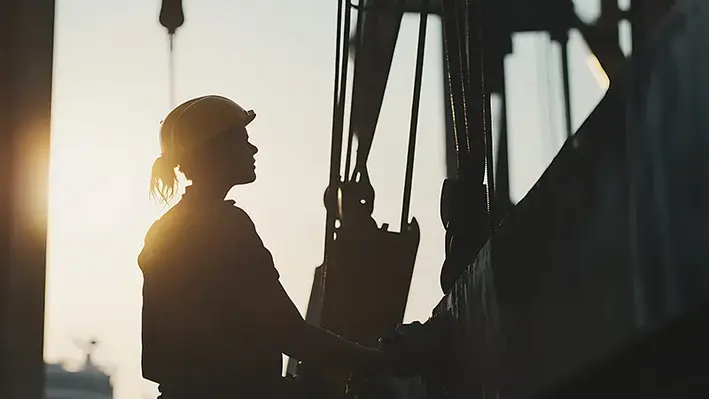
 Modern American Recycling Services Europe (MARS) has been named as the contractor to recycle Australia’s Northern Endeavour floating production storage and offtake (FPSO) vessel.
Modern American Recycling Services Europe (MARS) has been named as the contractor to recycle Australia’s Northern Endeavour floating production storage and offtake (FPSO) vessel.
“MARS best meets the Australian government’s aims for completing this important decommissioning work,” the Department for Industry, Science and Resources said in a statement.
“We contracted MARS following a global, competitive open tender. Under the contract, MARS will recycle the FPSO and manage the waste streams, including hazardous waste. The priority is for MARS to complete the work to high safety and environmental standards and meet all Australian and international requirements.”
China’s COSCO Shipping Heavy Transport will first dry tow the FPSO to Denmark using its semi-submersible heavy transport vessel, the Hua Rui Long.There are no purpose-built facilities in Australia equipped to recycle a vessel as large and complex as the Northern Endeavour FPSO.
MARS will then complete the recycling at its ship recycling facility in Frederikshavn.
“This purpose-built facility has the capacity to recycle the Northern Endeavour FPSO and meets the European Union’s Ship Recycling Regulation,” the Department noted.
This regulation aims to prevent, reduce and minimise accidents, injuries and other negative effects on human health and the environment when recycling ships.
The Department added that recycling of the FPSO accounts for less than 2% of the overall cost of the Northern Endeavour decommissioning programme.
Australia is keen to generate work and opportunities for its domestic industry arising from the growth of the decommissioning sector.
“While the FPSO recycling will happen overseas, there will be ongoing opportunities for Australian industry involvement in the Northern Endeavour decommissioning programme,” the Department statement noted.
Procurement opportunities for the remaining work, on Phases 2 and 3, will be available to local firms.
Phase 2 focuses on permanently plugging the Laminaria and Corallina wells, while Phase 3 focuses on removing remaining subsea infrastructure, recycling and waste management.
Page 3 of 13
Copyright © 2025 Offshore Network